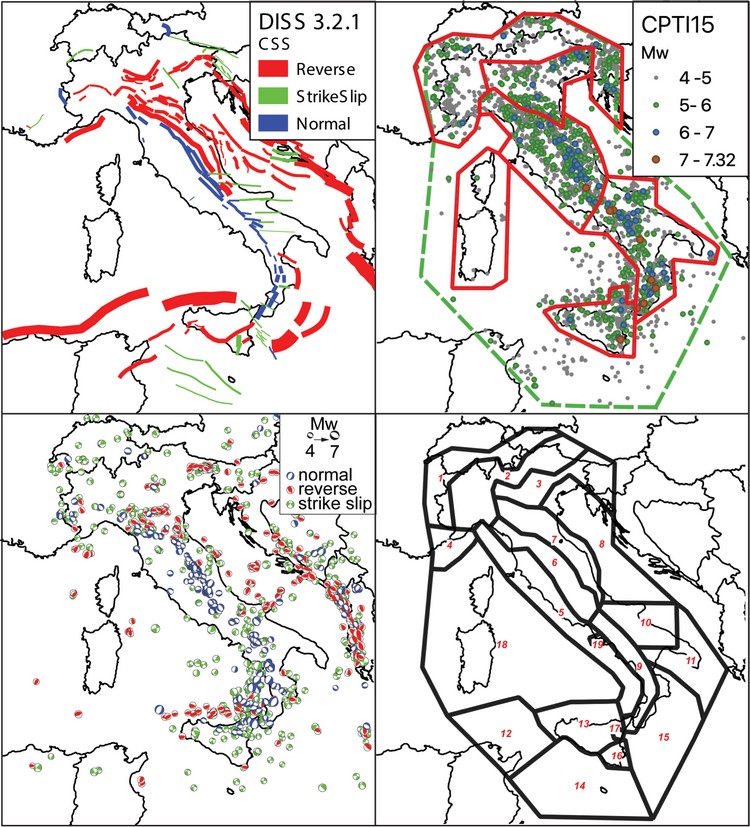
Visini, F., Pace, B., Meletti, C., Marzocchi, W., Akinci, A., Azzaro, R., Barani, S., Barberi, G., Barreca, G., Basili, R., Bird, P., Bonini, M., Burrato, P., Busetti, M., Carafa, M., Cocina, O., Console, R., Corti, G., D’Agostino, N., D’Amico, S., D’Amico, V., Dal Cin, M., Falcone, G., Fracassi, U., Gee, R., Kastelic, V., Lai, C., Langer, H., Maesano, F., Marchesini, A., Martelli, L., Monaco, C., Murru, M., Peruzza, L., Poli, M., Pondrelli, S., Rebez, A., Rotondi, R., Rovida, A., Sani, F., Santulin, M., Scafidi, D., Selva, J., Slejko, D., Spallarossa, D., Tamaro, A., Tarabusi, G., Taroni, M., Tiberti, M., Tusa, G., Tuvè, T., Valensise, G., Vannoli, P., Varini, E., Zanferrari, A., & Zuccolo, E. (2021).
Earthquake Rupture Forecasts for the MPS19 Seismic Hazard Model of Italy.
Annals of Geophysics, 64(2), SE220. doi:http://dx.doi.org/10.4401/ag-8608
Abstract
In recent years, new approaches for developing earthquake rupture forecasts (ERFs) have been proposed to be used as an input for probabilistic seismic hazard assessment (PSHA). Zone- based approaches with seismicity rates derived from earthquake catalogs are commonly used in many countries as the standard for national seismic hazard models. In Italy, a single zone- based ERF is currently the basis for the official seismic hazard model. In this contribution, we present eleven new ERFs, including five zone-based, two smoothed seismicity-based, two fault- based, and two geodetic-based, used for a new PSH model in Italy. The ERFs were tested against observed seismicity and were subject to an elicitation procedure by a panel of PSHA experts to verify the scientific robustness and consistency of the forecasts with respect to the observations. Tests and elicitation were finalized to weight the ERFs. The results show a good response to the new inputs to observed seismicity in the last few centuries. The entire approach was a first attempt to build a community-based set of ERFs for an Italian PSHA model. The project involved a large number of seismic hazard practitioners, with their knowledge and experience, and the development of different models to capture and explore a large range of epistemic uncertainties in building ERFs, and represents an important step forward for the new national seismic hazard model.
CORRESPONDING AUTHOR: Francesco VISINI,
Istituto Nazionale di Geofisica,
Sezione di Pisa, Pisa, Italy;
© 2021 the Author(s). All rights reserved.
Open Access. This article is licensed under a Creative Commons Attribution 3.0 International